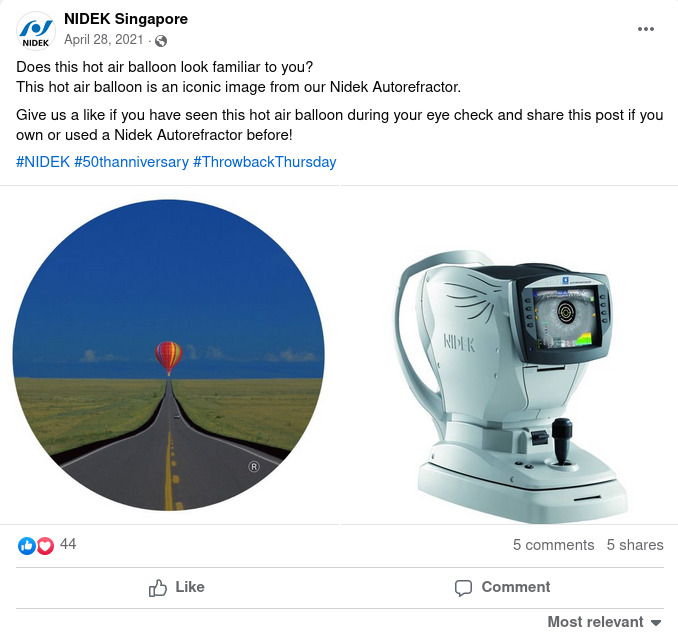You Have Seen This Before

The liminality of eye test images and where to find them
Recently I stumbled upon a video by Youtube animator u m a m i titled “What Do You See?”
Anyone that has had their eyes checked by an optometrist at any point in their life might recognize what the video is referencing. During an eye examination, the doctor asks you to look into a strange machine and stare at a small picture. This picture often depicts some object, such as a balloon or a house, in the middle of an uncannily empty landscape. This is then often followed by a startling puff of air hitting your eye.
It is clear that in many people these images evoke some kind of emotional response. They have become quite popular online in the broader phenomenon of liminal spaces, for some even being an entry point. With these images having been in use for a while, many have childhood memories of seeing them during a visit to the doctor, which adds an element of nostalgia and intrigue.

Their liminality is undeniable. The distance between the viewer and the subject, the empty landscapes, the somewhat cartoony colorful style as well as the odd framing give them that mysterious, uncanny, but also somewhat nostalgic feel that is characteristic of liminal space imagery. It feels like images that would be found in a children’s picture book, but at the same time the subjects are so oddly distant and the landscapes are so eerily… devoid of life.
By virtue of being strange pictures used exclusively in specialized medical equipment that also happen to play directly in a popular internet phenomenon, there has been interest in finding out more information about them. What’s the deal with these pictures? Where were they taken? Can we find the original, unedited versions?
After going down the very specific rabbit hole of autorefractor images, I think I can provide some answers to these questions.
Autorefractors
First of all, why do these images exist in the first place? What is their purpose exactly?
For optometrists one of the key diagnostic devices is the autorefractor. Its purpose is to measure the refractivity of the eye in order to test for nearsightedness or farsightedness. In a modern clinical setting, this device generally comes in a table-top device that also bundles a tonometer, which is the infamous air puff device used to measure the eye’s pressure, as well as a keratometer, which measures the curvature of the cornea in order to diagnose astigmatism.
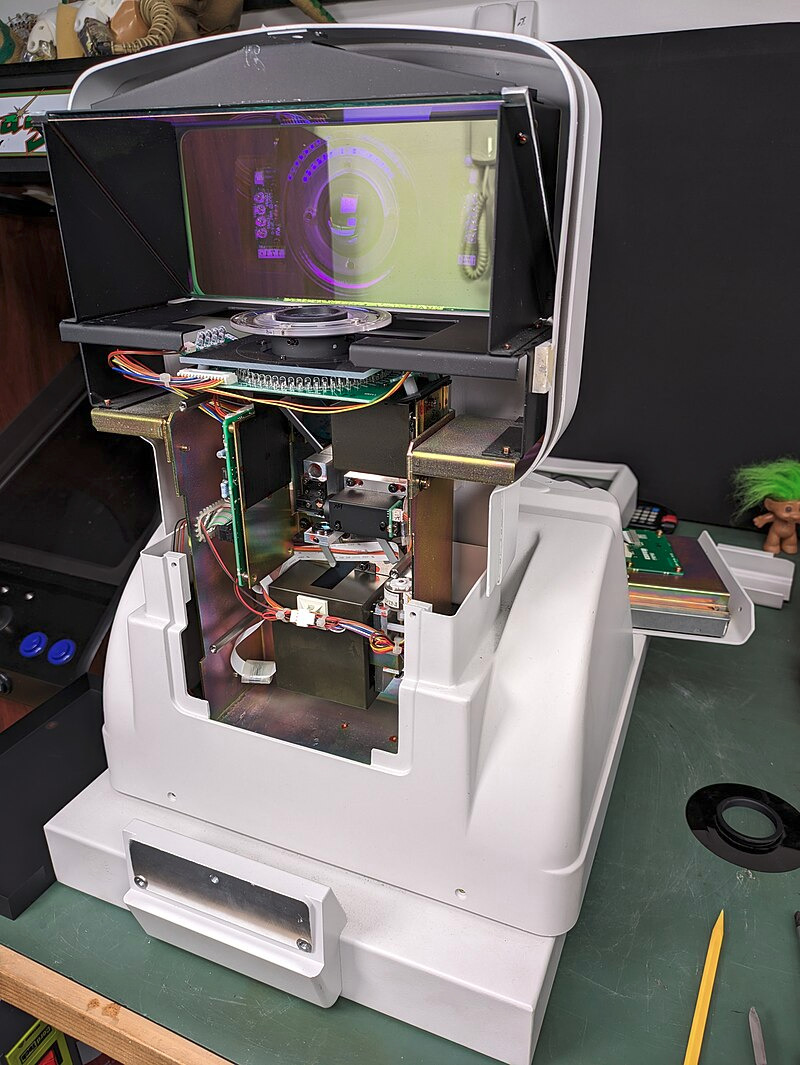
As mentioned in this patent, one of the difficulties with taking accurate measurements of the eye is it being a pretty dynamic organ in constant movement. This is especially problematic with children, who have a pretty hard time keeping the eye still for prolonged periods of time.
One technique that is employed to get around this issue is having a small picture to stare at with a very distinct, far away focus point. The patent mentions as examples “a sailboat on the ocean, a tractor in a field, or a balloon in the sky”.
The specific images that are used seem to vary from company to company, however there are three main images that people associate with these devices



I will therefore be focusing the investigation specifically on these three images.
The Balloon

The balloon image seems to be the most popular out of the three. It is iconic enough to appear in advertisments and have a small horror game based around it. By virtue of its popularity, it is also the one of which the most public information is available.
It is used in the autorefractor machines of a japanese company called Nidek, which specializes in optical medical equipment.
Nidek very much embraces how iconic this picture has become. As seen at the end of this comic, the image is framed in their offices. Additionally, Nidek has sponsored air balloon races as well as air balloon rides for local elementary schools.
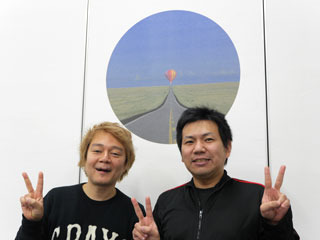
Through a news article on their website, we can find that the image is called 気球チャート (balloon chart), and was registered as a trademark in 2019. Oddly enough, as pointed out in this blog post, a black and white version of the balloon alone was also registered.
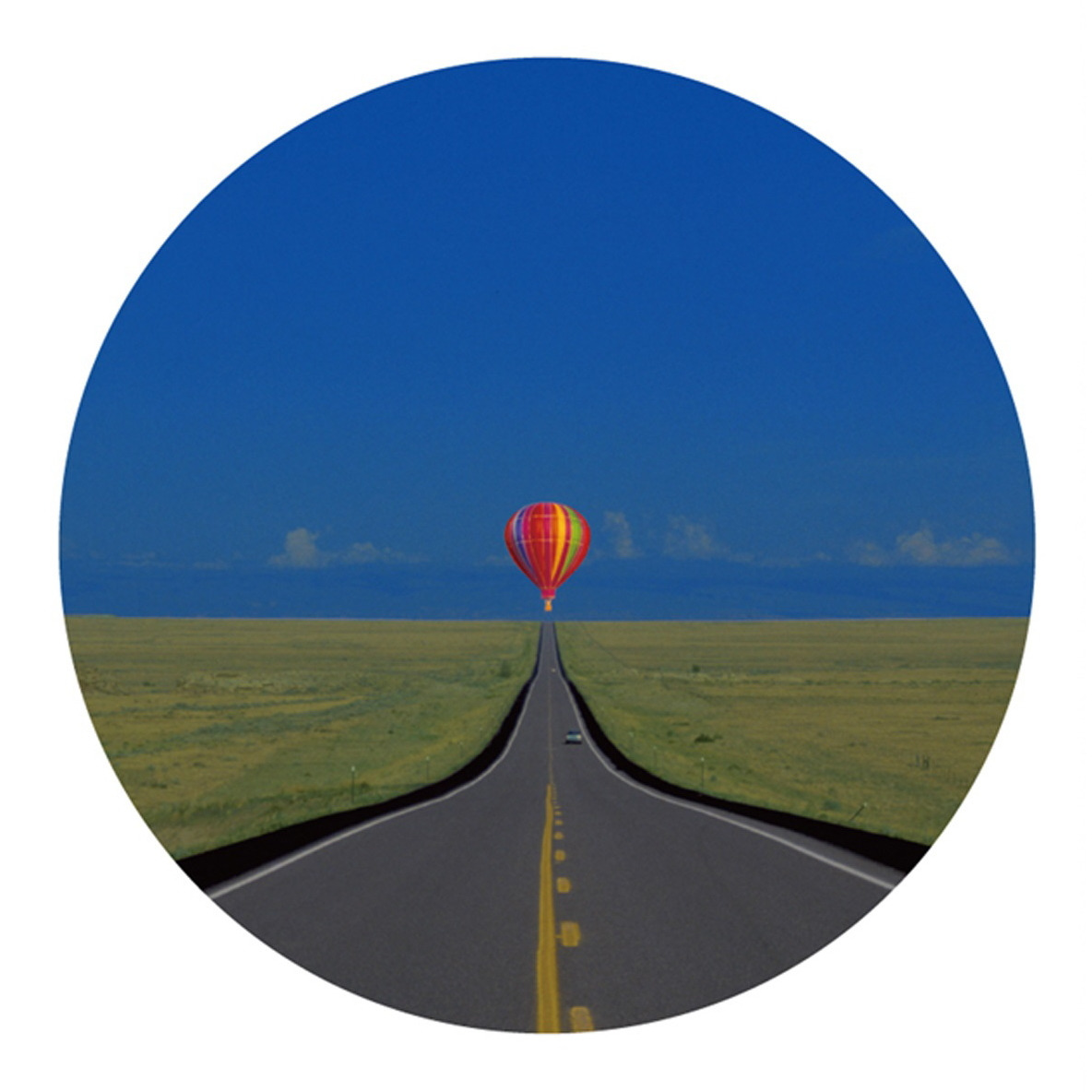

According to an interview with maidonanews, the image is a manipulation of an actual photograph of a road in Arizona, USA. This was chosen because the founder of the company, having studied abroad in the United States, had grown fond of the country and aspired to become the top seller of medical equipment in America.
The interview also establishes that this image has been in use since 90s. In the before mentioned comic, it is claimed that the image is 25 years old. With the publication date of the comic being 2016, this would date the picture at around 1991, which seems to match.
Starting out, instead of the balloon picture, their autorefractors used radial images called “starbursts”. Later on, an airplane was placed in the center of the chart to have a more direct focus point. Since it was still hard to keep a steady line of sight, it was later swapped out with the photograph of the road, on top of which a balloon was composited. According to the interview, the company was the first to employ color images in these devices.
In a news segment on ANNnewsCH, it is revealed that the balloon is actually an illustration, and the picture of the road was taken somewhere in Monument Valley. The show also hazards a guess as to the specific location, settling on somewhere along Route 163
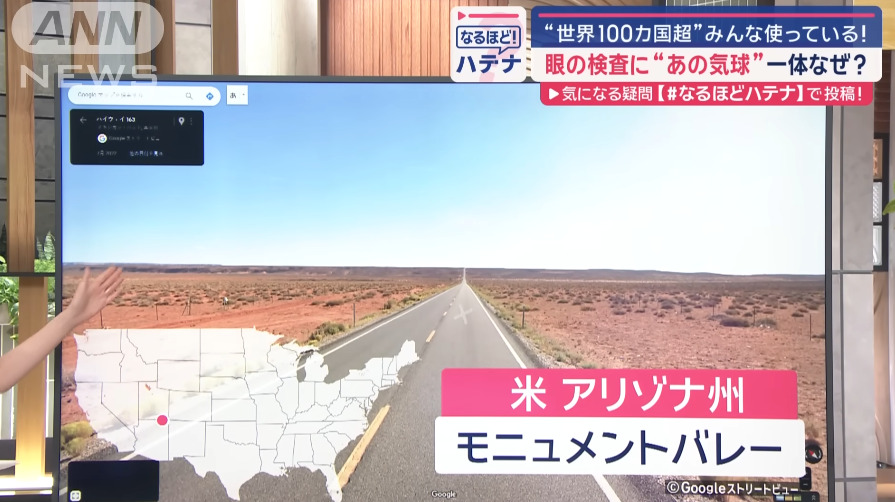
As an aside, it is oddly fitting for this image to have been taken in Monument Valley, as another picture that is a very popular example of liminal space imagery is this photograph of Monument Valley by Dino Kuznik
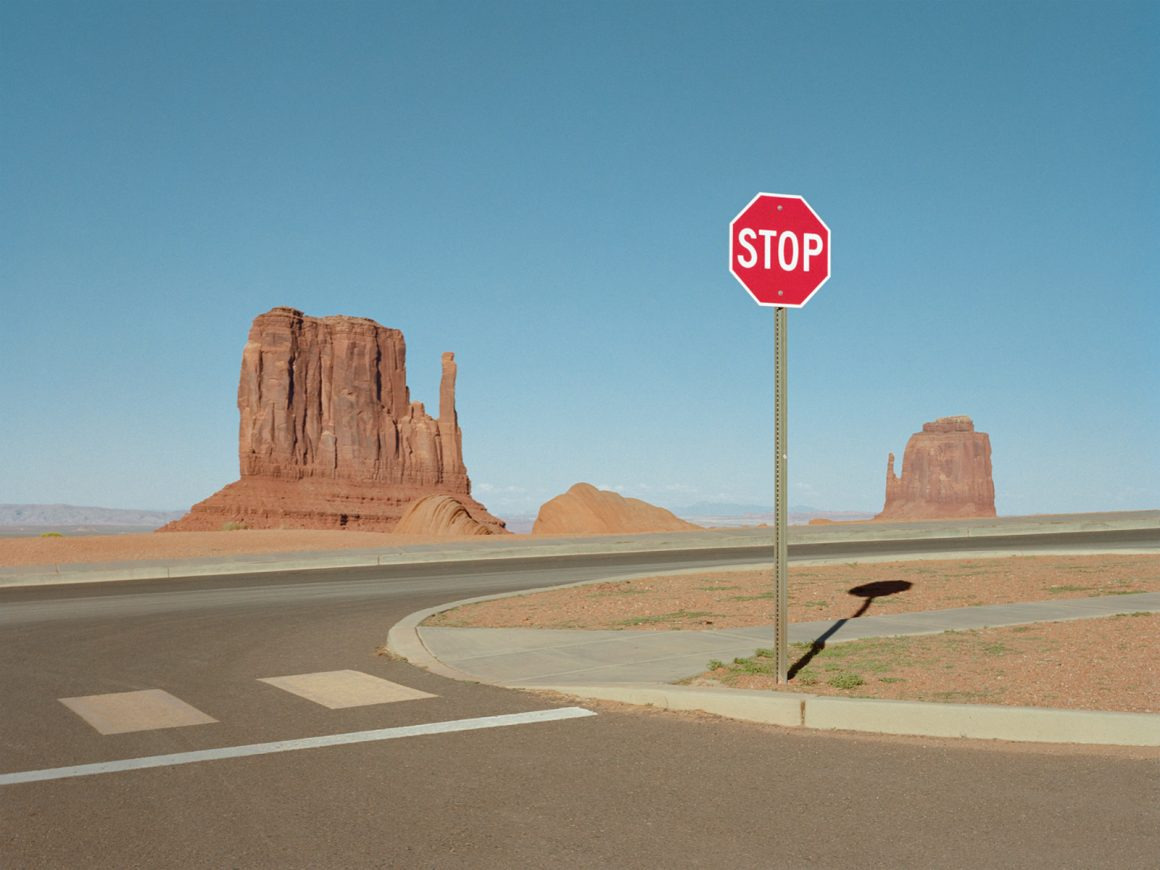
To date there is no definitive confirmation of the exact location of the original photograph. With the rise of the professional Geoguessr scene however, it might not remain a mystery for much longer! If there is any update on the matter, I will make sure to include it.
Update: as of the 28th of September 2024, youtuber Jeffiot in his video The Eye Test Image Mystery has identified the exact stretch of road used in this picture as being Forrest Gump Point, located indeed along Route 163 in Monument Valley! This location is significant for being the spot in which Forrest Gump stopped running, after 3 years, 2 months, 14 days and 16 hours!
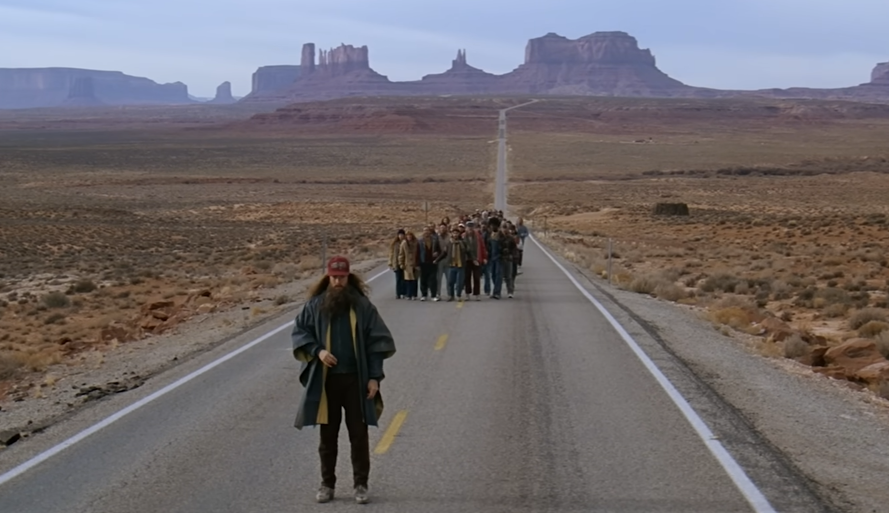
The video also adds more new pieces of information:
- It seems that the image might actually have been a composite of 3 separate images, based on analysis of the noise patterns: the balloon, the road, and the sky!
- It is theorized, based on a Reddit comment, that the specific balloon being used in the image is N4036Y, an Aerostar/Raven model RX-7 manifactured in 1983. The location of this balloon being Colorado would make this extremely fitting and the similarity is indeed striking, however this contradicts ANNnewsCH’s claim of it being an illustration, so more confirmation might be needed.
The balloon chart is not the only image used by this company. In this news entry on their website, a “flower chart” can also be seen, while for children there is a mention of a chart featuring the mascot Kumamon sitting in a field.
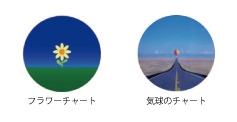
Nidek is also not the only company to feature balloons and roads in their autorefractors. For example, Canon offers autorefractor machines featuring two different balloon pictures!

The Barn

When I first saw this image, I actually wasn’t entirely sure if it was an actual picture used in autorefractors, or if it was an artistic recreation. The hazy lighting, odd blurriness and saturated colors gave it a look that immediately reminded me of Dreamcore, an aesthetic movement adjacent to liminal spaces.
Turns out however that it is an actual image used in the products of the Japanese optical equipment manufacturer Topcon.
『では、ここへあごを乗せて遠くを見ててください』
— 張田屋眼鏡院(店主 桃次郎) (@HMomojiro) November 18, 2020
『えっ〜、何が見えるの?何が見えるの?何が見えるの〜?』
別に大して子供が喜ぶようなものが見えるわけじゃないんだよ。
かといって、
大人が喜ぶ画像が見えるわけでもありませんが。#オートレフラクトメータ #上田市 #張田屋眼鏡院 pic.twitter.com/8rjp5sPUP5
This is confirmed by an article on their website, where they directly reference the image. They have been in business since 1947, and this red-roofed house is used in one of their top products called the Autoref (オートレフ).
In this Reddit thread, User RadicalEdward2 identified the original unaltered version of the picture to be this photograph
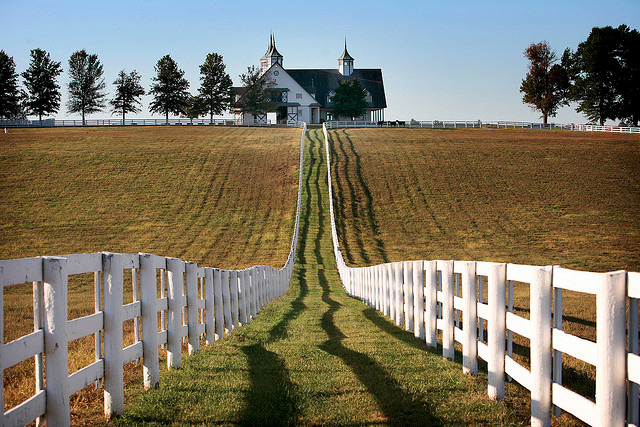
Indeed many features seem to match, such as the shape of the fence, despite having clearly been heavily manipulated to make the building appear much further away. The building is also strikingly similar.
Other elements, such as the trees and the particular pattern of the shadows, however, bring this theory into question. If it is the original unedited version, then there was some severe amount of manipulation involved. However it is clear that it is depicting the same location.
Oddly enough, one little tower on the right of the building was also removed, though this could just have been done to ensure that there wouldn’t be multiple competing focus points.
In a comment by user CuratorOfYourDreams in the same thread, it is claimed that the picture depicts Manchester Farm in Lexington, Kentucky. This is also reiterated by a comment by user GabrielWB on this danbooru post, which goes as far as to provide a precise Google Maps location
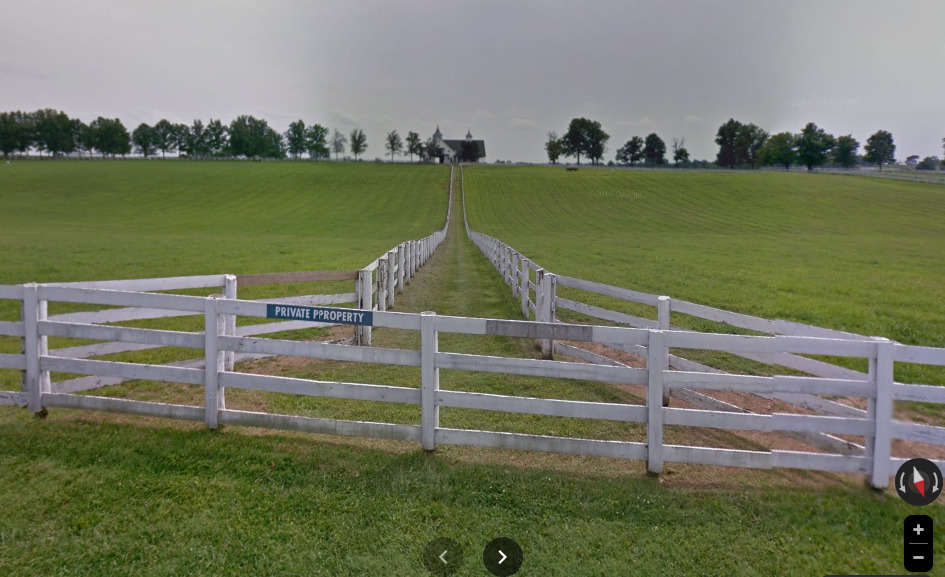
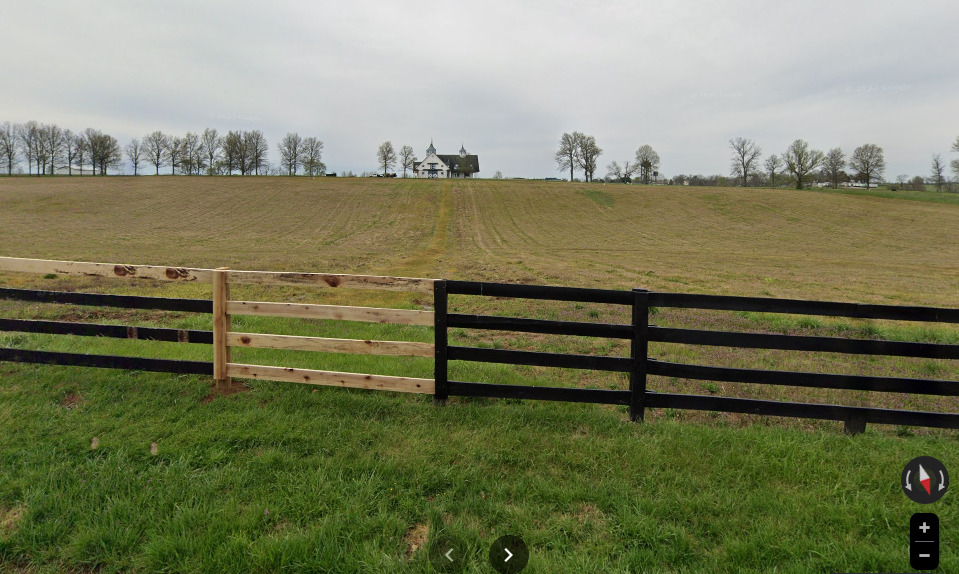
It seems that, sometime between 2015 and 2023, the long fence leading up to the building was removed
According to the Manchester Farm’s website, the farm was purchased in 1976 by Houston Oilman Mike G. Rutherford and currently serves as a nursery for racehorses. It also claims to be one of the most recognizable farms in Kentucky, which I think accounts for how easily it was identified online.
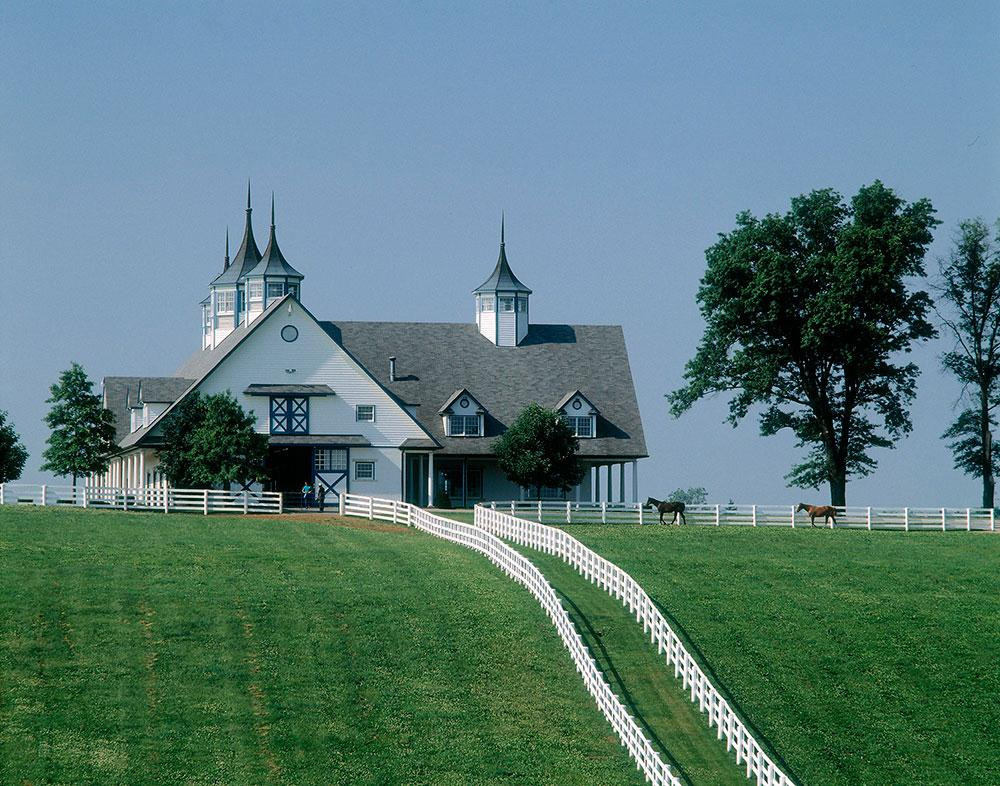
Indeed many more pictures of this building can be found not only on their website but all over the Internet, which indicates that this farm is an heavily photographed landmark of the area. It wouldn’t be surprising therefore if, when creating a picture for their autorefractor, the picture was found simply by looking up something akin to “american farm” on a website like Flickr or Pinterest
The Field

Together with the balloon chart, this picture of a small barn sitting in the middle of a field has also gained a great deal of notoriety. An artwork seemingly based on it called What We All Have Seen by artist youada was showcased at an Ota Fine Arts exhibit, and it is a very common subject in liminal space art.
My first impression was that, stylistically, it is very reminiscent of the works of famous japanese graphic designer Hiroshi Nagai. A lot of his art features clear skies, countryside landscapes with an overwhelming sense of stillness to them, and vegetation that is often drawn with a pointillistic technique.
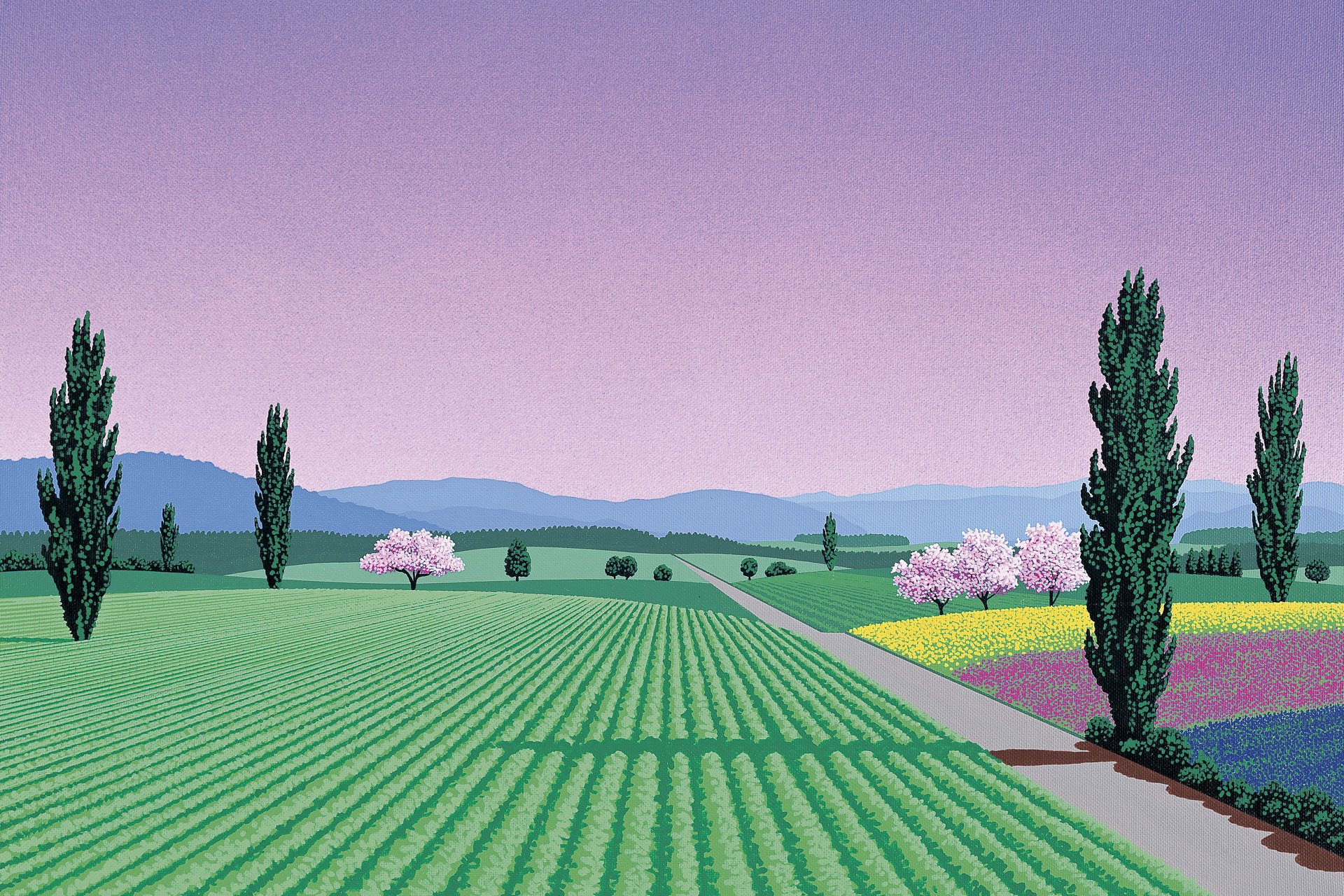

One thing that threw me off however was how surprisingly high resolution the picture was in almost every post. I later ran into news articles that included the image, and they would credit a graphic designer called Bryce Wilner
Indeed, on his website, there exists a webpage simply called Autorefractor. In this page (which is currently best viewed on Firefox/Safari) a 1920x1080 version of this image can be seen, with an animated blurring effect.
After contacting Wilner by email, he confirmed that he was the author of the image, and provided some additional context
That website is a 2017 artwork I made while I was studying design in grad school. I think I was interested in that autorefractor picture as a kind of test image. It’s an image that’s meant to demonstrate the various shapes a focusing eye makes—a scene that’s sublime and also completely forgettable. It’s like an image of everything and nothing.
I searched and searched for a high-res version of that image so I could animate it coming in and out of focus using HTML and CSS. The best I could do was a very low resolution JPEG, which I then completely redrew using design software, my memory of the image from my last optometrist appointment, and the low-res version as a reference. So in a way I am the author of the image on my site, but I have nothing to do with the images that are actually used as the background in an autorefractor machine.
As you indicate, this has led to a number of people republishing my drawing on other websites, and crediting me as the author of the original background image used in autorefractors. At this point, the citations are so many that I don’t see the point in trying to correct the record, unless someone asks me to clarify. Another demonstration of how easily we misunderstand internet images.
So, while this specific image is a recreation and doesn’t come from an actual autorefractor, there is some actual picture that it was directly based on. My first guess was that it came from some Topcon device, given the similarity to the previous barn image, however it seemed they didn’t have a machine with a similar picture. I could find however two different companies that use very similar imagery.
The first one is the chinese company Visionstar, which features on the product page of the FA-6100A autorefractor an extremely low res picture that appears to match very closely
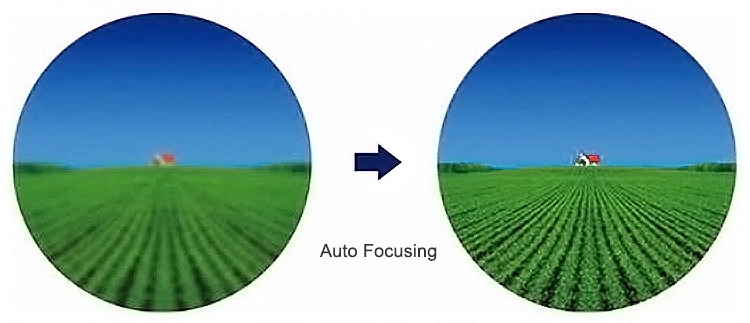
The second one is the korean company Potec. On listings for their PRK-5000 and PRK-6000 autorefractors I could find the following image
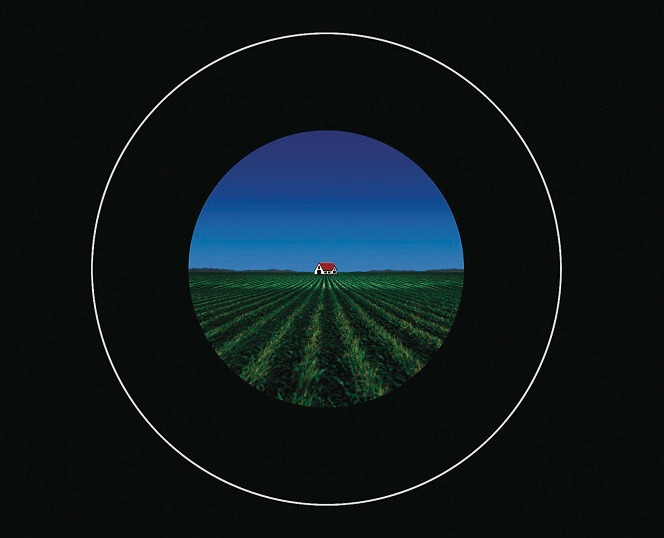
This is further confirmed by this blog post which shows a photo of a Potec machine and the picture it contains.
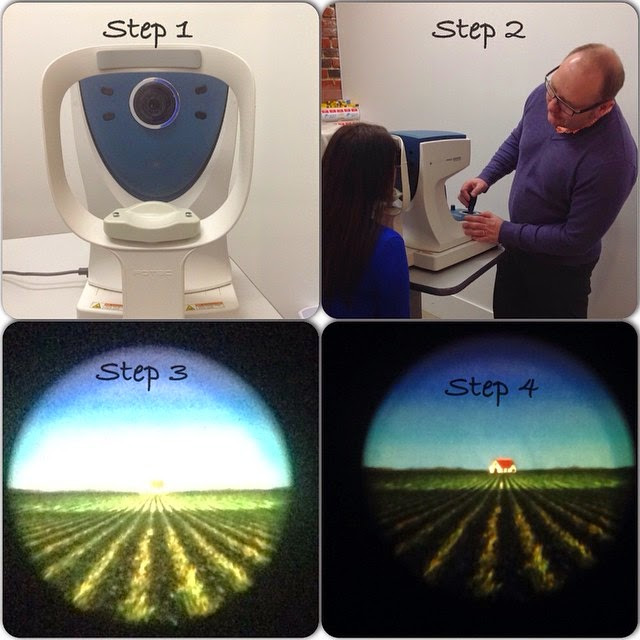
I tried contacting both companies to see if I could get more details about the pictures but sadly received no response. If any additional information surfaces, I will definitely be updating this post.
Conclusion
I was actually kind of surprised how much of the information was already available publicly on the internet, but either hidden behind language barriers or just way too scattered, for something as specific as autorefractor images. It goes to show how important it is for the Internet to not just be an idle repository of information, but to be constantly shuffling and reorganizing in order to make that knowledge more and more accessible.
I hope that this post, by bringing all this information together in one place, is useful for all the people that, like me, are curious to know more about oddly specific stuff like this!
